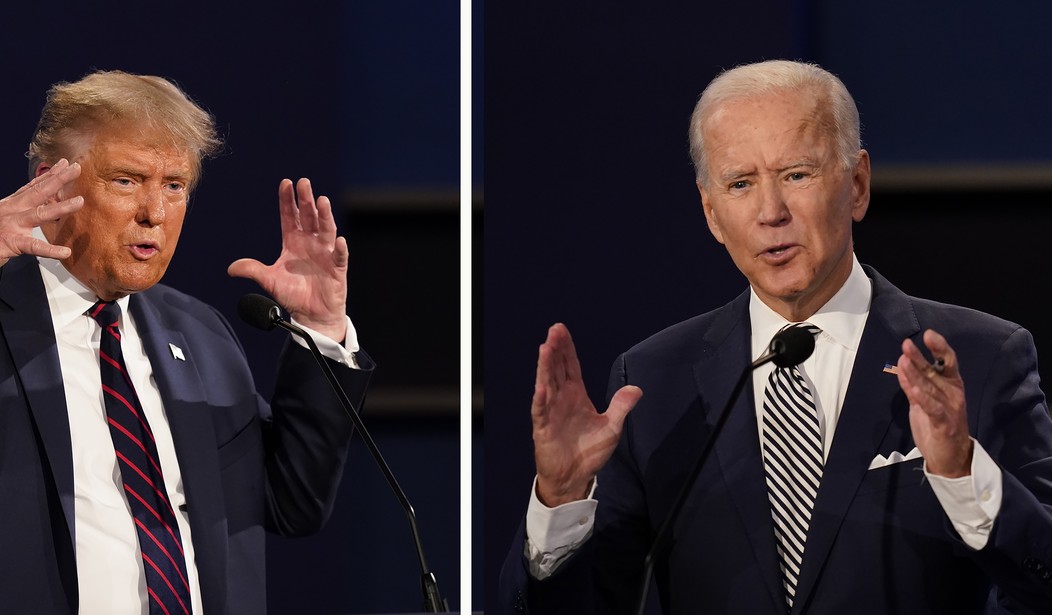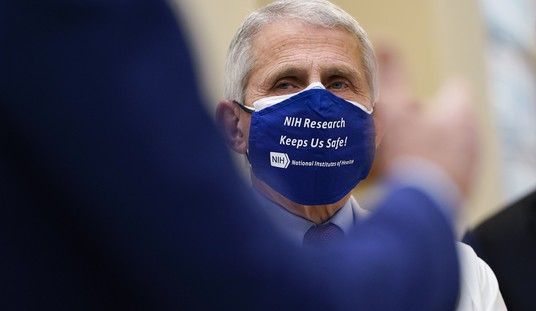"All the spin about a "soft landing" and "the great Biden comeback" was false and didn't work," tweets Laura Ingraham.
All the spin about a “soft landing” and “the great Biden comeback” was false and didn’t work. This poll is of registered voters (not likely), but if this is close, things are looking very bad for Biden and very good Trump and for America. https://t.co/xVkoJCNIaT
— Laura Ingraham (@IngrahamAngle) April 28, 2024
"This poll is of registered voters (not likely)," Ingraham comments on the poll described in the following tweet by Byron York, "but if this is close, things are looking very bad for Biden and very good for Trump and for America."
New CNN national poll: Trump over Biden 49-43 in 2-way race, 42-33 in 5-way race. 55% say Trump's presidency was a success, while 44% say it was a failure. 61% say Biden's presidency has been a failure, 39% a success. https://t.co/Vr8mVZ1xEY pic.twitter.com/32R8aOXnrJ
— Byron York (@ByronYork) April 28, 2024
Polls are always (yes, always, an absolute term) tricky to digest as part of a political diet. They cannot be the main course, but they cannot be left off the plate.
On the one hand, polls cannot be exclusively relied upon as political barometers for three reasons. First, they are only snapshots of public sentiment. They survey a portion or sample size of a larger group. While a collection of citizens being polled may resemble the overall electorate, "may resemble" is the best a poll can do in estimating the makeup and turnout of an electorate because it is considering the opinions of a defined number, such as 1,000 people, rather than the overall number of people who vote. Second, polls are subject to error. This is self-evidenced by the fact that polls disclose a "margin-of-error" in their results. This usually several-percentage-point margin is what the poll appraises its latitude of inaccuracy to be in either direction, but even the margin-of-error is subject to error. That happens when polls outperform (in terms of inaccuracy) their stated margin-of-error. An example of this is when a poll that disclosed a 3.5 percent margin-of-error turns out to be inaccurate by 7 percentage points. Third, the formulaic inputs needed to conduct a poll cause it to be, at some level, subjective. This relates to who and how many are being polled, as outlined a few sentences before, as well as to what questions are asked and how those questions are phrased. The respondent inputs in question include but are not limited to how many overall people are polled; whether they are described in the poll as "likely" or "registered" voters; how they are sampled according to party affiliation; and how the poll is demographically comprised. How questions are phrased matters, too. Something along the lines of, "If the election were held today, who would you vote for?" is a different question than, "Who do you plan to vote for in the upcoming election?" There is an ample supply of reasons, including historic inaccuracy in some cases, to take political polls with a healthy degree of skepticism.
On the other hand, here are three reasons why polls should not be ignored. First, they may be accurate. That a poll may well reflect the larger electorate in respondent makeup and public sentiment is reason enough to at least give it and its topline numbers a glance. Second, some polls carry influence beyond their accuracy or inaccuracy. When a poll is published by a big-name polling firm, the result of that poll makes an instant impact on the overall political landscape, regardless of whether it turns out to reflect accurately. This can in some cases be driven by how eye-popping the result is, but generally, a survey published by Gallup or Fox News or another big-name news or polling entity instantly moves the political needle. Third, polls of all kinds can always be fodder for the ongoing political discussion. Accurate polls and inaccurate polls can be used as examples of the good and bad in political analysis. They can also be used by various campaigns to give themselves added support that appears to be credible, or the campaigns can use them in an attempt to politically damage an opponent.
The poll that is the subject here is, as Byron York tweets, a CNN national poll showing that former President Donald Trump holds a lead over President Joe Biden. The head-to-head number, while it shows an incumbent president being polled underwater to his opponent months before a presidential general election, is not as attention-getting as 61 percent responding that his presidency has been a failure to 39 percent saying it is a success.
"If this is close," is how Laura Ingraham precedes her comment that, "Things are looking very bad for Biden and very good for Trump and for America." It could be argued that even if those numbers are not close to accurate, things are looking very stormy politically for President Joe Biden.
























Join the conversation as a VIP Member